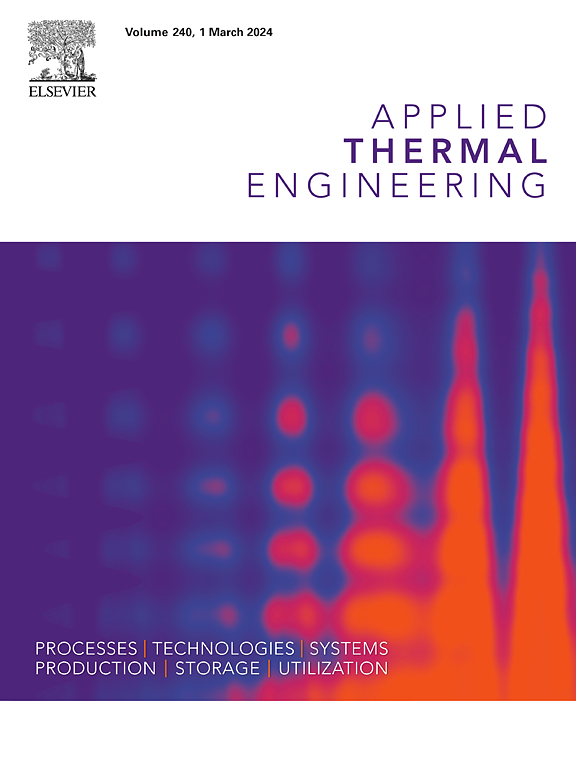Phase transition and agglomeration characteristics of fine particles in humid flue gas flowing through perpendicular pipe arrangement
IF 6.9
2区 工程技术
Q2 ENERGY & FUELS
引用次数: 0
Abstract
The excessive emission of particulate matter and the waste of residual heat are major issues in the flue gas emission process. By arranging perpendicular pipe turbulence heat exchange devices in the flue gas, it is possible to achieve flue gas heat recovery and fine particles agglomeration during water vapor phase change process. A numerical calculation model of the particle agglomeration process was established, involving turbulent agglomeration, Brownian agglomeration and vapor phase-change agglomeration. The influence of flue gas particle concentration, flue gas temperature, flue gas flow rate, flue gas humidity, heat exchange device wall temperature and structure on the agglomeration of particles was studied. The results indicate that an increase in particle concentration can enhance agglomeration efficiency, while excessively large or small particle sizes can reduce this efficiency. A decrease in flow velocity provides particles with more residence time within the heat exchanger, thereby improving agglomeration efficiency. A drop in flue gas temperature weakens convective heat transfer and vapor-phase condensation, leading to decreased agglomeration efficiency. Condensation of water vapor on particle surfaces promotes particle agglomeration efficiency. Lower wall temperatures and higher water vapor volume fractions increase the amount of vapor condensation, leading to more particles agglomeration under the influence of condensation. The use of staggered arrangements in the structure also helps improve particle agglomeration efficiency.
垂直管道布置下湿烟气中细颗粒的相变及团聚特性
颗粒物的过量排放和余热的浪费是烟气排放过程中的主要问题。通过在烟气中布置垂直管道紊流换热装置,可以实现水蒸气相变过程中的烟气热回收和细颗粒团聚。建立了颗粒凝聚过程的数值计算模型,包括湍流凝聚、布朗凝聚和气相相变凝聚。研究了烟气颗粒浓度、烟气温度、烟气流量、烟气湿度、换热装置壁温和结构对颗粒团聚的影响。结果表明,颗粒浓度的增加可以提高团聚效率,而颗粒尺寸过大或过小都会降低团聚效率。流速的降低使颗粒有更多的停留时间在换热器内,从而提高团聚效率。烟气温度的降低削弱了对流换热和气相冷凝,导致团聚效率降低。水蒸气在颗粒表面的凝结促进了颗粒的团聚效率。较低的壁温和较高的水蒸气体积分数增加了蒸汽凝结量,导致更多的颗粒在凝结的影响下团聚。在结构中使用交错排列也有助于提高颗粒团聚效率。
本文章由计算机程序翻译,如有差异,请以英文原文为准。
求助全文
约1分钟内获得全文
求助全文
来源期刊

Applied Thermal Engineering
工程技术-工程:机械
CiteScore
11.30
自引率
15.60%
发文量
1474
审稿时长
57 days
期刊介绍:
Applied Thermal Engineering disseminates novel research related to the design, development and demonstration of components, devices, equipment, technologies and systems involving thermal processes for the production, storage, utilization and conservation of energy, with a focus on engineering application.
The journal publishes high-quality and high-impact Original Research Articles, Review Articles, Short Communications and Letters to the Editor on cutting-edge innovations in research, and recent advances or issues of interest to the thermal engineering community.
 求助内容:
求助内容: 应助结果提醒方式:
应助结果提醒方式:


